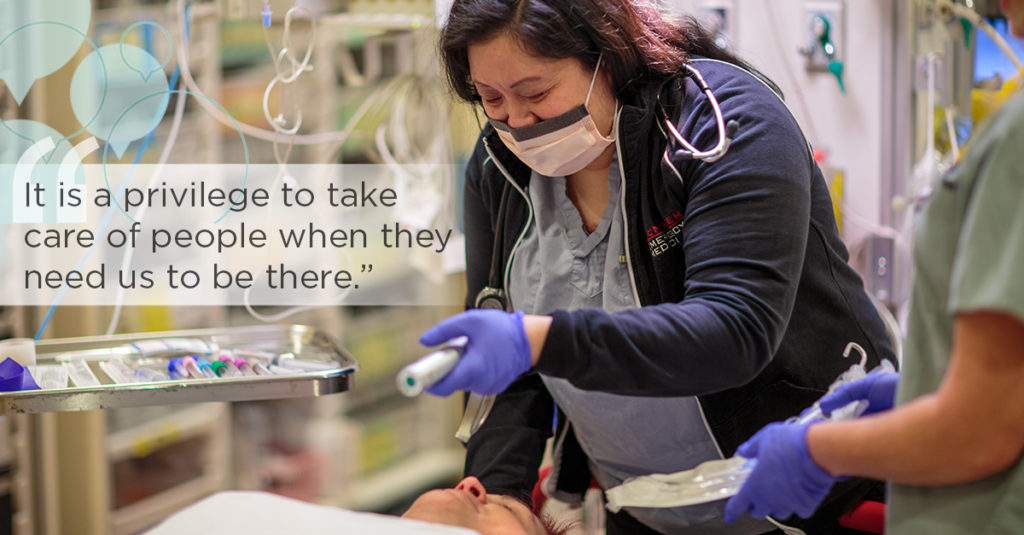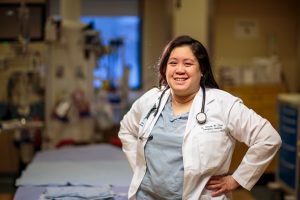
Introducing… an emergency physician
Dr. Teresa Chan is an emergency physician at Hamilton General and Juravinski hospitals as well as the Urgent Care Centre. She has been with Hamilton Health Sciences (HHS) since 2013. Teresa is also a base hospital physician at the Centre for Paramedic Education and Research (CPER) where she’s worked for the past two years.
She recently delivered a TEDx talk, where she talks about what skills are required of emergency physicians. You can also follow her on Twitter @TChanMD.
What do you love most about your role?
I love the diversity of people I meet. It is a privilege to take care of people when they need us to be there, whether it’s for a small laceration on their forehead or a cardiac arrest. Emergency physicians take care of it all.
What do you find challenging?
The hardest part of my job is working in a system operating at capacity. Our hospitals are busier than ever and that is definitely manifest in our emergency departments. I think our teams of paramedics, nurses, doctors and auxiliary staff do an amazing job every day with what they have, but it can be challenging to work within a system that is always operating at full tilt.
Describe a typical day
I usually have to look at my phone to make sure I’m going to the right place at the right time. We have such odd schedules, I can sometimes get this wrong. On the way to work, I pick up a coffee regardless of whether it’s 11 pm or 7 am. Usually, I arrive to a full wait room, and greeted by a team of upbeat nurses, unit clerks and allied health who all keep on top of the dozens of patients we actively care for throughout the day. Then, I spend the day seeing patients. I may dive in to see about 10-12 in that first hour. Sometimes I’m lucky enough to have a resident-physician or medical student to mentor and teach too. On some days I also report to CPER and offer support via phone to nine different regions of paramedics across Ontario.
After a sick patient is cared for, flipping between the varieties of patients can be interesting but also difficult.
Tell us about your most gratifying experience at HHS
As an emergency physician, I hope I never have to care for one of my patients twice. Of course, I like them to stay happy and healthy, and not suffer with disease or disasters. Occasionally, however, formerly sick patients can show up with minor complaints and it is really rewarding to have a conversation with them. I recently ran into one of my patients who asked me if I remembered when we last met. To be honest, I recognized his face and his name, but the context escaped me. And I admitted that to him. He nodded then reminded me of the time I made a difficult diagnosis that saved his life. That was a real treat to see him again, and see him so healthy and well.

What’s one thing people would be surprised to learn about your role?
They might be surprised to learn how hard it can be to manage emotions during a shift. As a patient, you tend not to think about what your doctor must be experiencing. In fact, to respect the confidentiality of other patients, doctors shouldn’t tell you about how their day is going. That said, it can be difficult to manage both critically ill patients and those who have simpler medical problems. If I’ve been taking care of a very ill patient, that can mean I put everyone else on hold for a few minutes or even hours, to take care of that one really sick patient. After a sick patient is cared for (regardless of a good or bad outcome), flipping between the varieties of patients is interesting but also difficult.
